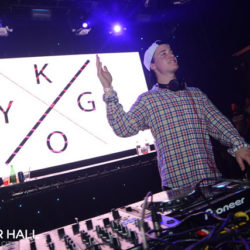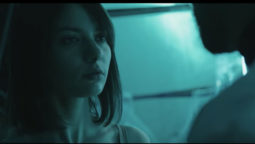Last week, the Wall Street Journal published an article whose headline touted deep house as the next big trend in electronic music, citing statements made by Ultra Music President-Founder Patrick Moxey during a private interview. While the piece contained no direct quotes from Moxey explicitly declaring it such, a number of other EDM blogs took creative liberties to that effect with their own versions of the headline. Then again, perhaps it’s unrealistic to expect copycat blog sites to cross their Ts and dot their Is before appropriating a story (something we recently experienced with our Adventure Club interview being taken out of context).
Lapses in journalistic integrity aside, however, the dance music blogosphere did highlight a well-documented shift in in the industry – as we’ve mentioned before, the numbers alone indicate that deep house is the next “It” genre. More and more, contemporary dance music enthusiasts favor the jazzy dissonance, complex melody and classic four-on-the-floor beats of artists like Tchami, Klingande and Probz over the visceral buildup-bass drop schemes of big room and festival house. Album artwork for their releases boasts a simple, understated charm reminiscent of ’80s new wave, almost as though the industry would rather let the music speak for itself.
However, fans of the genre who favored it as far back as when it was still called UK garage aren’t unilaterally excited about deep house’s newfound mass appeal. Many argue that the quality of the music will suffer; long before EDM the music industry began to favor music styles that were easier to replicate. Three-chord punk anthems took center stage during the rock ‘n’ roll era, and autotuned vocals came to marginalize mainstream hip-hop; after all, who’s to say that the same couldn’t happen to deep house?
What nobody’s addressing, though, is that the entire scene is already going through something of an identity crisis. Disclosure, the critically acclaimed duo lauded by the EDM media as the poster children of the deep house movement, went on the record a year ago insisting that they’re not deep house. “Deep house is like very simple, just straight 4/4 kicks, very simple drums, deep jazz chords, simple basslines, simple samples…” Guy Lawrence of Disclosure told MTV in an interview. “There is no way that a song like ‘Latch’ can be described as deep house.”
Are the artists responsible for the movement simply too hipster to embrace the label? Hardly. Disclosure’s not the only one; Kygo is often grouped into the category of deep house even though his trademark remixes of old songs like Marvin Gaye’s “Sexual Healing” fall far outside of what would traditionally be called deep house. Artists like Penguin Prison and Poolside release electro pop and classic disco, respectively, but routinely fill slots on bills for deep house lineups.
Rather, the current shift in EDM is much bigger than a single sub genre. It includes Daft Punk‘s retro approach on Random Access Memories, the genre-bending live sets of Flume and to some degree even the growing popularity of melodic dubstep like Seven Lions. It’s the resonating sound of the youngest generation of dance music fans outgrowing fist-pumping at festivals, instead seeking out sounds more sophisticated than the over-hyped money shot that is a bass drop. Still, the media needs to call it something – just like how they needed Moxey to declare it the next big thing, even when he didn’t – and for now, “deep house” will suffice.
The deep house movement is at little risk of being watered down by the music industry because it’s already branching off in too many directions to be so easily contained. In his most perceptive moment of the interview, Moxey said, “The great thing about electronic music is every time people want to put it in a box, it changes. Any time one part of it becomes commercialized, new parts start to reinvent themselves. It’s in a constant process of refreshment.” By its very nature, the current trend in dance music represents the scene’s ability to push the pendulum back the other way when it’s swung too far in one direction – and in the end, that might turn out to be its biggest saving grace.







Join the discussion
comments powered by Disqus